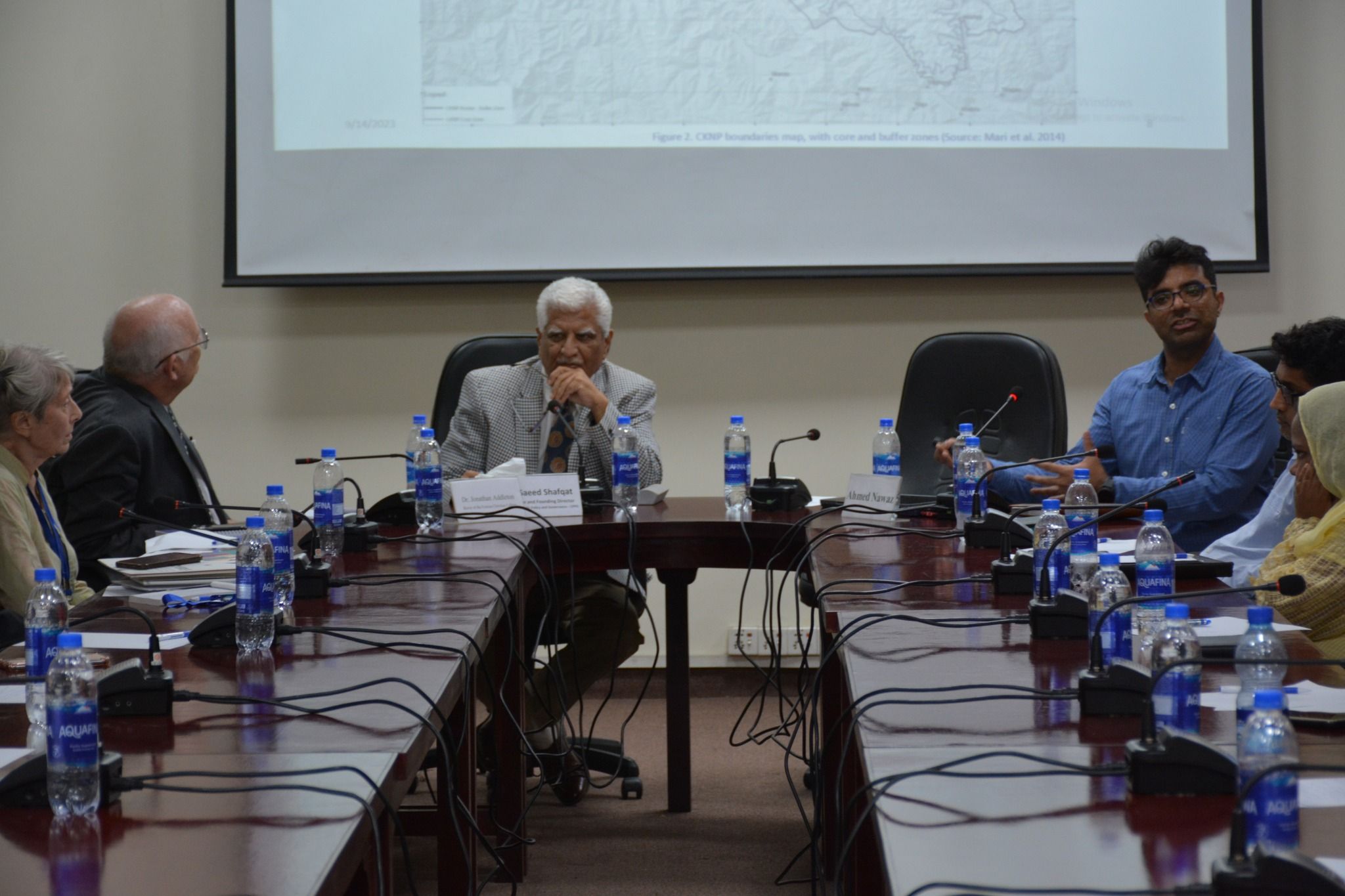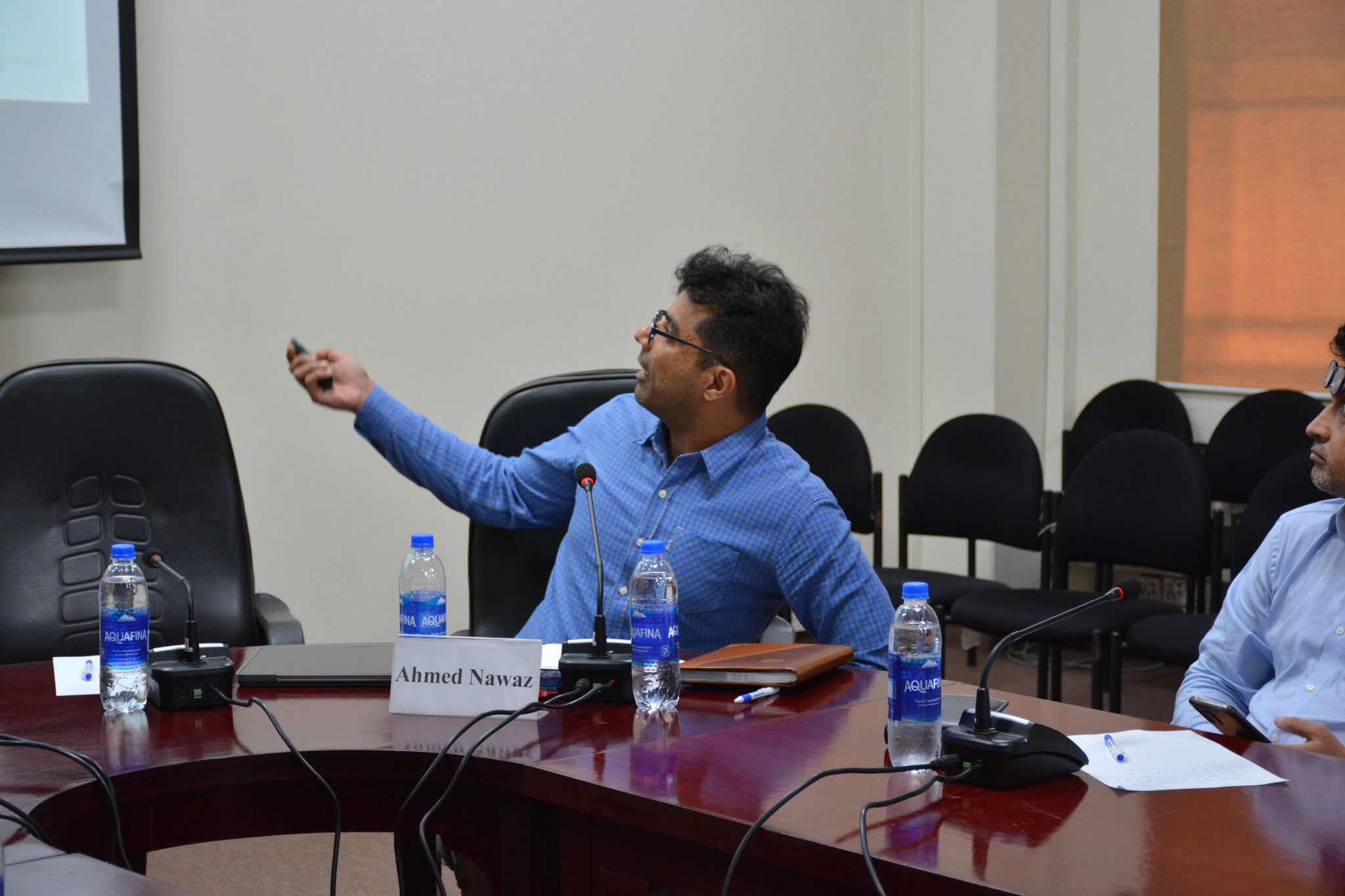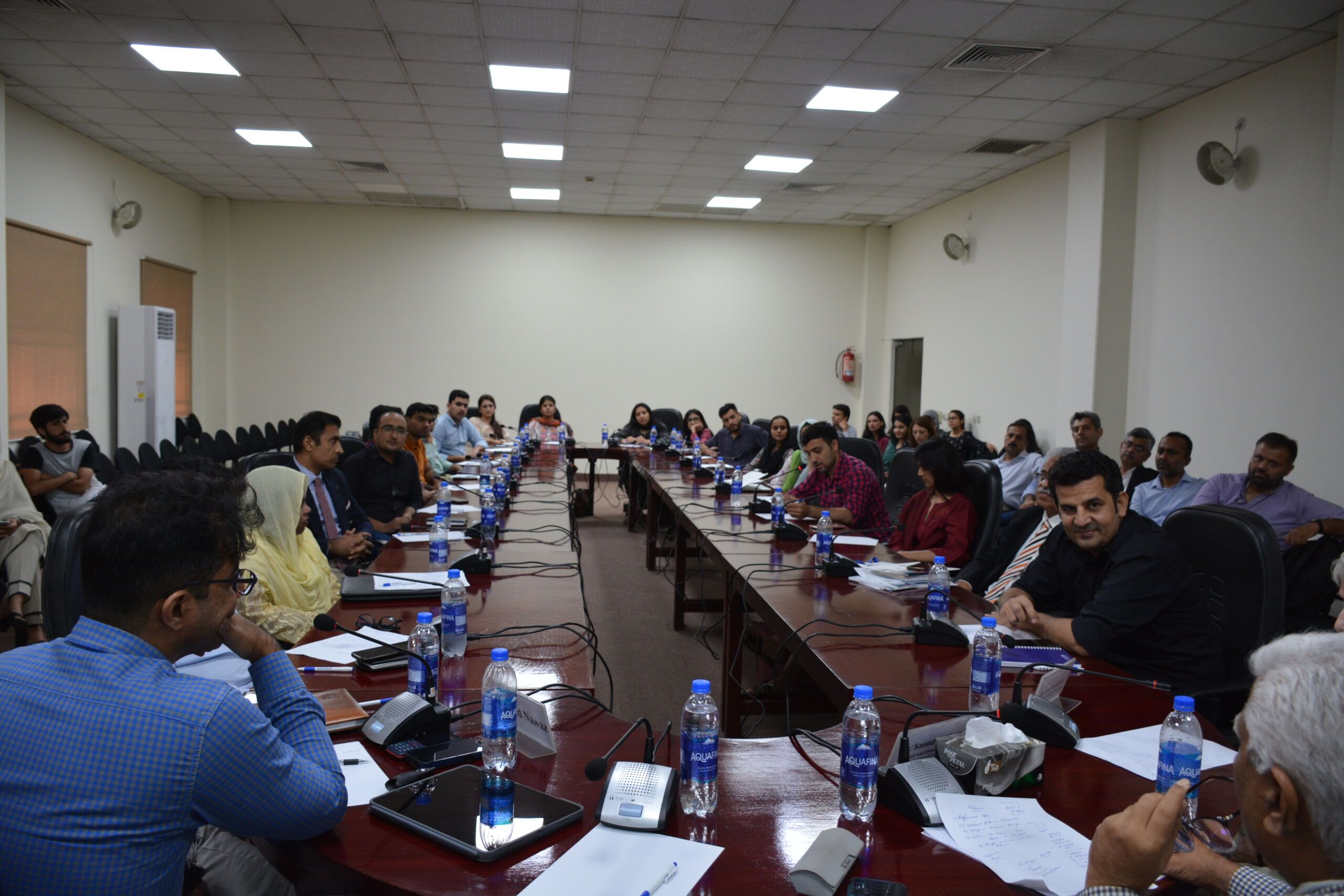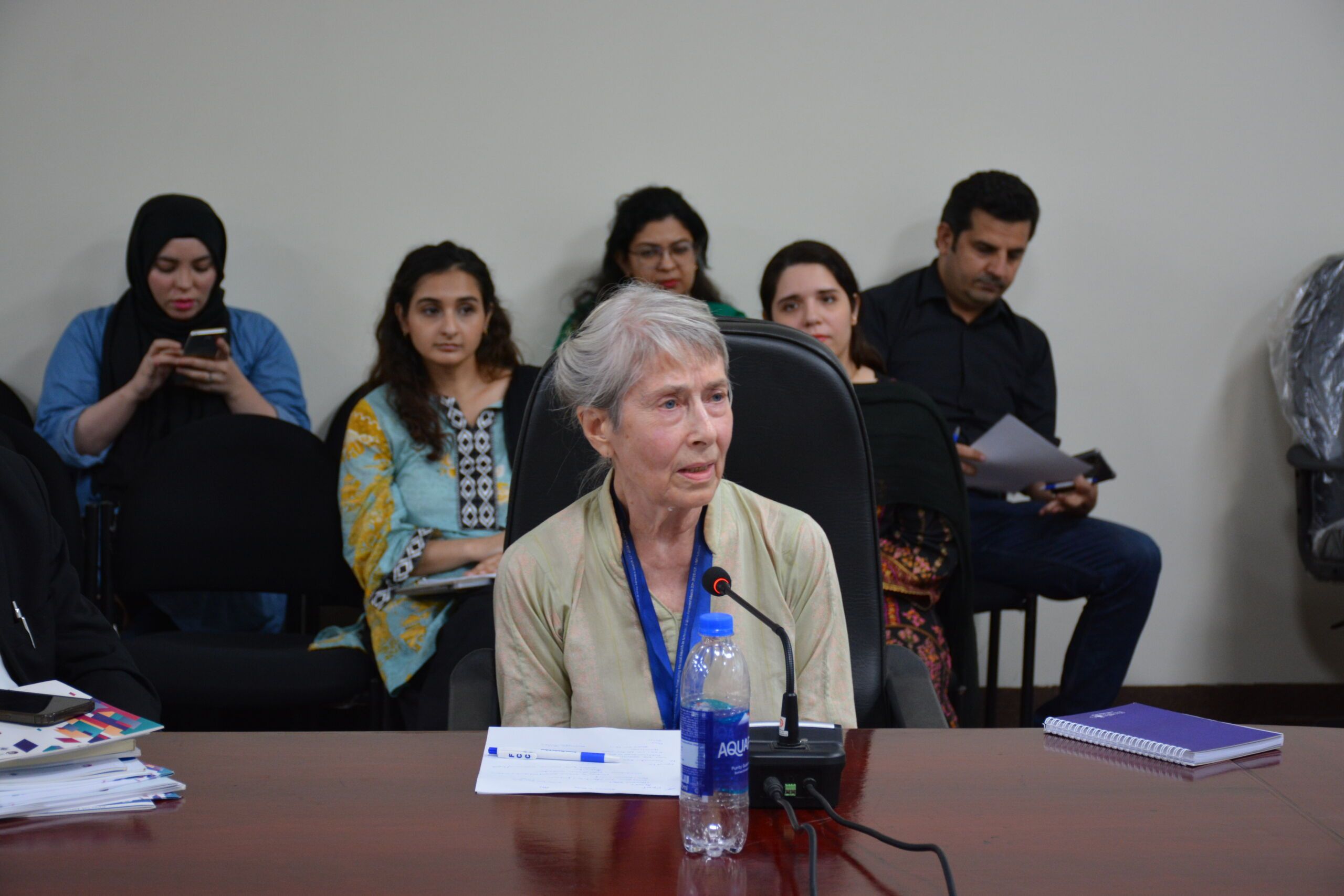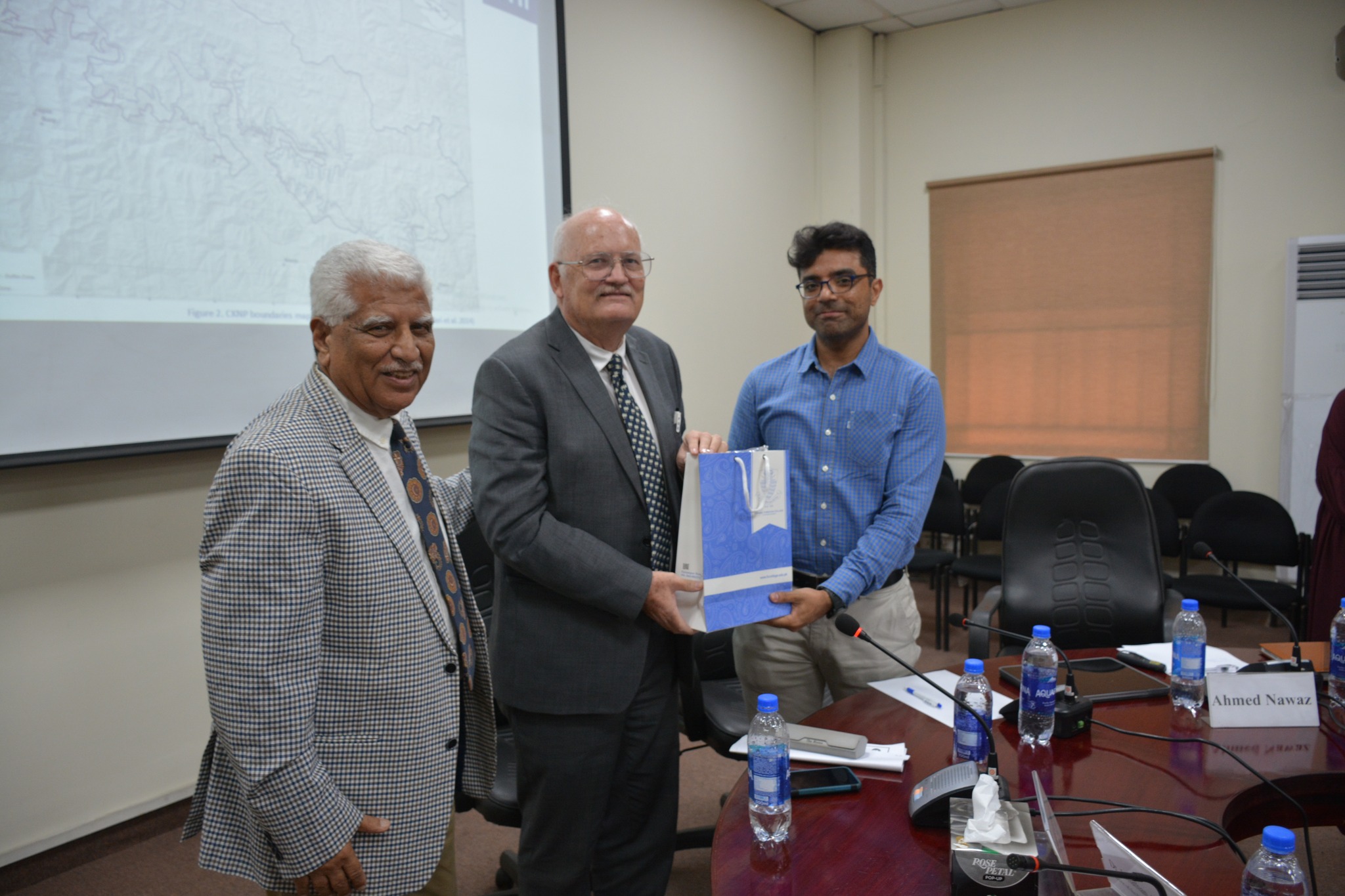
Changing Discourse of the Protected Areas of Governance in Pakistan: Analysis of the Natural Resources Regimes of Central Karakoram National Park
Seminar
Past Event
Sep 14, 2023 - 4:00 pm |
Sep 14, 2023 - 6:00 pm
Ahmed Nawaz
E-002 FCCU
Upcoming Event
On Thursday, September 14, 2023, The Centre for Public Policy and Governance organized a seminar on “Changing Discourse of the Protected Areas of Governance in Pakistan: Analysis of the Natural Resources Regimes of Central Karakoram National Park.” Ahmed Nawaz, who is currently a doctoral fellow at the University of Iceland’s Environment and Natural Resource (ENR) Department, was invited as a guest speaker. Mr. Ahmed previously completed his Master’s degree from the same institute and was an alumnus of CPPG, holding Executive Master in Public Policy from FCCU. The session was moderated by Dr. Saeed Shafqat, Founding Director and Professor at CPPG.
Mr. Ahmed presented his comprehensive analysis pertaining to the regulatory framework governing natural resources regimes within the Central Karakoram National Park. Initiating his analysis, he presented the International Union for Conservation of Nature (IUCN) definition of protected areas, which delineates them as geographical spaces recognized, dedicated, and managed through legal or other effective means to achieve the long-term conservation of nature with associated ecosystem services and cultural values. Within this paradigm, a series of pivotal questions arise, each encapsulating its own distinct governance concern. For instance, it is significant to know: Who defines these areas? How those decisions are made? Are people taken on board when making those decisions? How are they recognized and dedicated? Who does this process, manages it, and regulates people? Who has the power to enforce these values?
Elaborating on the definition, Mr. Ahmed presented the six broad categories of protected areas with particular emphasis on national parks. Notably, Pakistan’s approach leans heavily towards national parks, encompassing a strategy that allows the usage of sustainable resources while concurrently pursuing conservation. In contrast, neighboring countries in the Hindu Kush region, such as Nepal, Bhutan, and India, exhibit a more landscape-oriented approach. Understanding these variations related to governance and resource allocation, there is a lot of maneuverability as to who has access to these resources and who governs them. These areas are essential instruments for in-situ conservation and safeguarding biodiversity resources. Additionally, they are also aimed to offer a broad range of socio-economic and cultural benefits to society, especially for the communities that live next to the park.
Focusing on Pakistan and its target of achieving 30 by 30, as a part of the global expansion of protected areas, Mr. Ahmed argued it is important to see how Pakistan is going achieve this long-term objective. In the next seven years, how Pakistan is going to have 17% of land as a protected area, while also doing conservation, providing ecosystem services, and bringing socio-economic benefits? The most critical of these is the achievement of effective management and socioeconomic benefits.
To assess the applicability of this goal, starting from legislation, Mr. Ahmed shed light on Pakistan’s legislative framework which has experienced notable changes over time. The whole conservation strategy, wildlife protection, and establishment of protected areas have been under continuous change depending on the constitutional arrangements observed through martial laws and other government regimes. In the near past, The Protected Areas Initiative in 2020, under the PTI government, aimed to expand the country’s coverage to 15% of the total area by 2023 while also declaring several new national parks with an additional goal of developing effective management regimes for existing protected areas. He remarked, it is pertinent to note that only a limited number of protected areas in Pakistan have approved management plans or effective governance regimes.
Central Karakoram National Park serves as a focal point of Mr. Ahmed’s analysis due to its possession of an approved management plan and sustainable resource practices and offers an ideal context for examining the design and performance of existing governance. The study’s objectives encompassed an analysis of CKNP’s governance framework, the interaction between different actors, and CKNP’s resources to achieve desired outcomes. Two central research inquiries sought to understand how institutions form actors’ patterns of interactions with CKNP’s resources and between stakeholders, as well as the effectiveness of CKNP’s governance system, and how it can deliver equitable conservation, and achieve the socio-economic development goals.
To elucidate the analytical framework, Mr. Ahmed shared that his framework takes roots from authors, Peterson, Christofferson, and Watten. Summarizing their broad categories and elements, he has composed five main components. These include; a) natural attributes and features of protected area, b) roles and decision-making power of different actors and stakeholders within a governance system, c) institutions; adopting Douglas North’s definition of institution which are rules, norms, conventions, and legislative structures and mechanisms, d) patterns of interactions; how actors interact with one another, and how actors interact with the protected area, and e) outcomes, encompassing both positive or negative impacts stemming from modifications to the governance framework.
Delving into the discussion part, Mr. Ahmed presented a description of the Central Karakoram National Park encompassing details about its geographical area, inhabitant communities, socio-economic features, and challenges faced by the CKNP. CKNP spans an area of 10,557 km2 with 72 percent of the area as the core zone and the rest constituting the buffer zone. It was established in 1993 while the park received a five-year management plan in 2013. Approximately 230 settlements housing a quarter million population reside there. They are fragmented and concentrated along the western and southern boundaries. These communities are understood to be the primary stakeholders of the park. These people are mostly agro-pastoralists. They have farm and non-farm incomes depending heavily on the natural resources of CKNP. The key challenges faced by CKNP includes conservation problem, balancing sustainable socio-economic benefits, and promoting community awareness at the local level.
There are four national resource regimes where people interact with wildlife; wildlife hunting, pasture and rangeland use, tourism, and forest resources. Wildlife hunting involves hunting and retaliatory killing of carnivores like Markhor etc., which results in biodiversity and wildlife loss. As for pasture and rangeland use, there is an unregulated use of pastures causing competition between livestock and wildlife, and invariably resulting in disease transmissions. Whereas, the tourism regime includes porter services and tour guides resulting in uncontrolled pollution and unregulated tourism. While the forest resources include firewood and timber collection whose excess use is promoting deforestation and habitat loss.
Elaborating on the institutions governing CKNP, he pointed out that protected areas including CKNP were mostly dormant or “paper parks” as all interactions were prohibited under the Wildlife Preservation Act 1975. The protected areas governance has undergone a process of evolution and is shifting away from “fortress conservation”. These protected areas became operational in 2008 as community engagement and access were recognized. The first management plan was also approved in 2013 following sustainable natural resources use in the buffer zone.
After this approval, certain modifications were observed in the interactions. Wildlife hunting introduced new forms of trophy hunting programs, livestock insurance, and predator-proof corals. This modification reaped benefits for the community as they receive an 80 percent share in permits, compensation, and prevention of depredation. In the pasture and rangeland use, livestock vaccination programs and assistance with fodder production were introduced which helped in healthier livestock and alleviating fodder shortages. The tourism regime increased support to develop local tourism ultimately helping in capacity and infrastructure development while also developing a share in waste management fees. For forest resources, tree plantation drives were initiated that helped in increasing tree populations, the proliferation of seeds, and the cultivation of saplings.
These modifications reaped several notable outcomes. The commodification of ungulates and pastures encouraged locals to protect and conserve flagship species. Revenue sharing brought local development in communities. There has been an increase in key ungulates and carnivore populations. The introduction of protection mechanisms for disease transmissions is another positive outcome. Moreover, a certain kind of legitimacy and mechanism is evident that has aided in improving trust among local communities.
Concluding the entire discussion, Mr. Ahmed shared how local communities prioritize socio-economic benefits and overall concerns. All these communities are widely diverse and it is extremely difficult to group them in a single entity. Benefits are not equally shared across all communities. Thus, it is important to create awareness regarding key issues, resource use, and the need to work together and create linkages among these communities and different regimes.
The talk was followed by a stimulating Q&A session that lasted half an hour. Dr. Jonathan Addleton, Rector, FCCU gave his comment and thanked the guest for an insightful presentation. Dr. Saeed Shafqat thanked the Rector for his presence and the guest speaker for sharing an informative, well researched and rigorous presentation on the Protected areas of Central Karakoram National Park.


